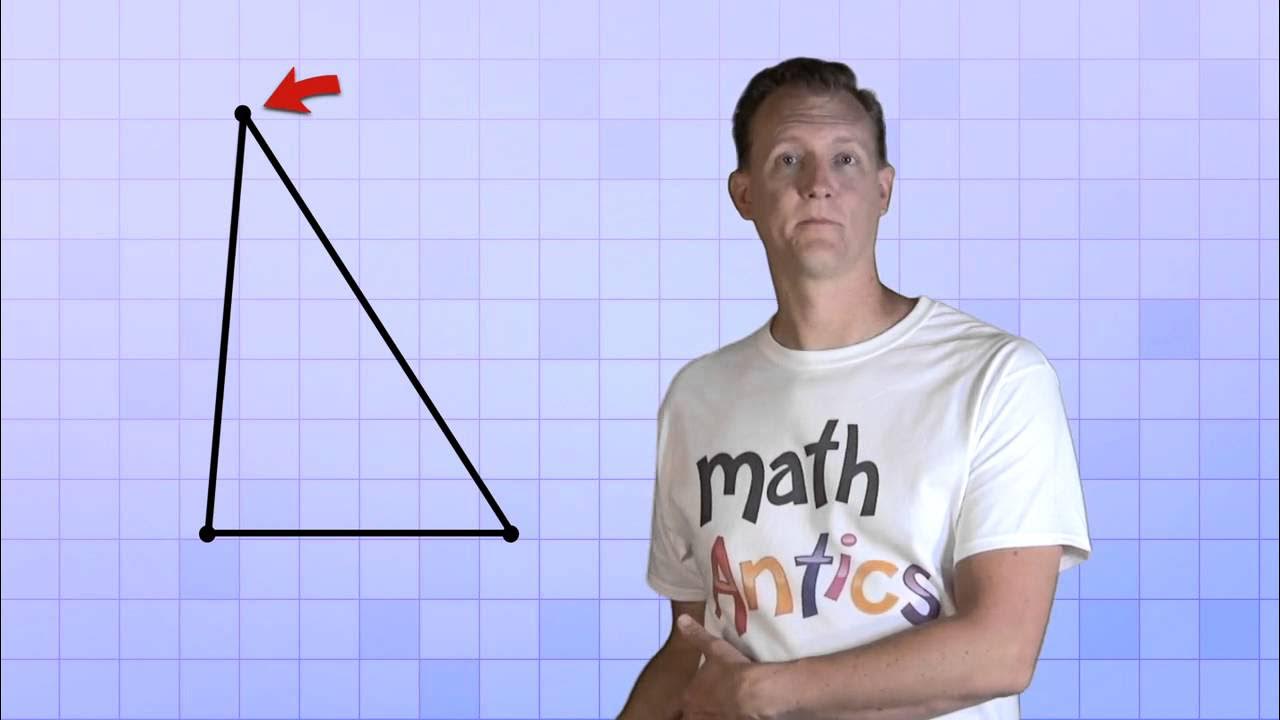Math Antics - Quadrilaterals
TLDRThis Math Antics video delves into the fascinating world of quadrilaterals, teaching viewers about their unique properties and classifications. Starting with squares, the video explores how altering sides and angles leads to rectangles, rhombuses, and parallelograms. It clarifies the distinction between trapezoids and trapeziums, emphasizing the importance of parallel sides in their definitions. The video also highlights the invariant sum of a quadrilateral's angles, which always equals 360 degrees, and demonstrates how this knowledge can be applied to solve angle-related problems, reinforcing the fundamental principles of quadrilaterals in a clear and engaging manner.
Takeaways
- 📐 A quadrilateral is a polygon with four sides and four angles.
- 🔲 A square is a special type of quadrilateral with all sides equal in length and all angles being right angles.
- 📏 A rectangle is a quadrilateral with four equal angles but not necessarily equal sides, and it has two pairs of parallel sides.
- 💠 A rhombus is a quadrilateral with all sides equal but angles not equal, and it also has two pairs of parallel sides.
- 🔄 A parallelogram is characterized by two pairs of parallel sides, and it can have various types including rectangles, rhombuses, and squares.
- 📚 All quadrilaterals are parallelograms, but they have special names based on the properties of their sides and angles.
- 🚫 A trapezoid (or trapezium in some countries) is a quadrilateral with only one pair of parallel sides.
- 🤔 The term 'trapezium' can be confusing as it's used to describe different shapes in different English-speaking countries.
- 🔍 Quadrilaterals with no parallel sides are simply called quadrilaterals without a special name.
- 🔢 The sum of the interior angles of any quadrilateral is always 360 degrees, which can be understood by dividing it into two triangles.
- 🧩 Knowing the sum of the angles in a quadrilateral can help solve problems involving unknown angles in various shapes.
Q & A
What is a quadrilateral?
-A quadrilateral is a polygon that has exactly four sides and four angles.
What makes a square a special kind of quadrilateral?
-A square is special because it has four sides of equal length and four equal angles, which are all right angles.
How does a rectangle differ from a square?
-A rectangle has four equal angles but does not have four equal sides; it has two pairs of opposite sides that are parallel.
What is a rhombus, and how is it different from a square?
-A rhombus is a quadrilateral with four equal sides but does not have equal angles. It has two pairs of parallel sides, similar to a square.
What defines a parallelogram?
-A parallelogram is a quadrilateral with two pairs of parallel sides. It does not necessarily have equal sides or equal angles.
Can you explain the difference between a trapezoid and a trapezium in different countries?
-In the U.S., a trapezoid is a quadrilateral with one pair of parallel sides. In the U.K., the same shape is called a trapezium. Conversely, in the U.S., a quadrilateral with no parallel sides is sometimes called a trapezium.
How can you find the unknown angle in a quadrilateral?
-To find the unknown angle in a quadrilateral, sum the known angles and subtract this total from 360 degrees, since the sum of all angles in a quadrilateral is always 360 degrees.
What is the total sum of the interior angles of a quadrilateral, and how can it be proven?
-The sum of the interior angles of a quadrilateral is always 360 degrees. This can be proven by dividing the quadrilateral into two triangles, each having angles that sum to 180 degrees.
How can you determine all the angles of a parallelogram if only one angle is known?
-In a parallelogram, opposite angles are equal. Knowing one angle allows you to determine its opposite angle and calculate the remaining angles since the sum of all angles is 360 degrees.
What is a key characteristic of all parallelograms in relation to their angles?
-A key characteristic of parallelograms is that their opposite angles are equal due to the parallel nature of their opposite sides.
Outlines
📐 Introduction to Quadrilaterals
This paragraph introduces the concept of quadrilaterals, which are polygons with four sides and four angles. It uses the square as an example of a special type of quadrilateral with equal sides and right angles. The video script explains that squares have two pairs of parallel sides and that this characteristic is crucial for understanding other quadrilaterals. It also mentions that by altering the sides or angles of a square, different quadrilaterals such as rectangles and rhombuses can be formed, both of which also have parallel sides but differ in side lengths and angles.
🔍 Classification of Quadrilaterals
The second paragraph delves deeper into the classification of quadrilaterals. It explains that a rectangle is a quadrilateral with four right angles but not necessarily equal sides, while a rhombus has equal sides but not equal angles. The script then introduces the parallelogram, which has two pairs of parallel sides but does not require equal sides or angles. It clarifies that all squares, rectangles, and rhombuses are special types of parallelograms. The video also addresses the confusion between the terms 'trapezoid' and 'trapezium' used in different regions to describe quadrilaterals with one pair of parallel sides. Lastly, it discusses quadrilaterals with no parallel sides and the sum of the angles in a quadrilateral, which is always 360 degrees, using examples to demonstrate how this knowledge can solve for unknown angles.
Mindmap
Keywords
💡Quadrilateral
💡Square
💡Rectangle
💡Rhombus
💡Parallelogram
💡Trapezoid
💡Parallel Sides
💡Right Angles
💡Sum of Angles
💡Equal Opposite Angles
Highlights
A quadrilateral is a polygon with exactly four sides and four angles.
A square is a special quadrilateral with all sides equal in length and all angles right angles.
Squares are characterized by having two pairs of parallel sides.
Rectangular quadrilaterals have four equal angles but not necessarily four equal sides.
A rhombus has four equal sides but does not have four equal angles.
Parallelograms are defined by having two pairs of parallel sides, regardless of side lengths or angles.
All squares, rectangles, and rhombuses are types of parallelograms.
A trapezoid (or trapezium in some countries) has only one pair of parallel sides.
The term 'trapezium' can refer to different shapes depending on the country, causing some confusion.
Quadrilaterals with no parallel sides are simply referred to as quadrilaterals without a special name.
The sum of the interior angles of any quadrilateral is always 360 degrees.
This angle sum can be demonstrated by dividing a quadrilateral into two triangles, each with angles summing to 180 degrees.
Knowing the angle sum helps solve for unknown angles in quadrilaterals.
In parallelograms, opposite angles are equal, which is useful for solving unknown angles.
The video provides a method to find unknown angles in a parallelogram given the measure of one angle.
The video concludes with the importance of practice in mastering the classification and properties of quadrilaterals.
Transcripts
5.0 / 5 (0 votes)
Thanks for rating:





